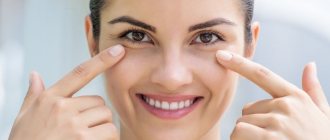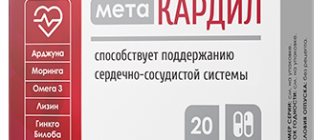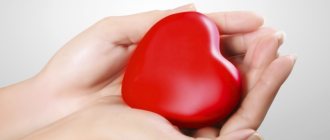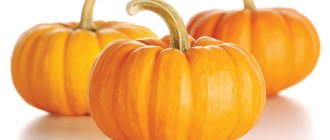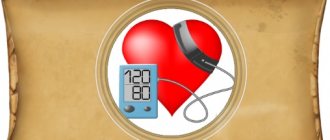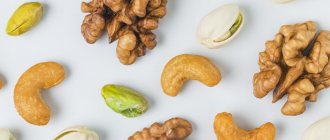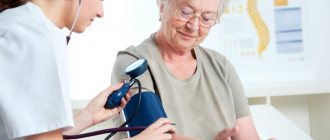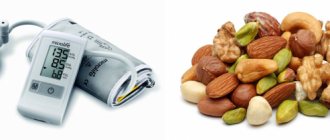Why is Shishonin gymnastics needed?
Basically, gymnastics can be used for two diseases:
1. Hernias in the cervical region (uncomplicated)
2.Hypertension (uncomplicated)
Gymnastics routine.
Once a day for 2-4 weeks. Then 3 times a week.
Warning!
NO NEED TO DO GYMNASTICS WITH POWER! Master the technique first; there is no need to forcefully pull the muscles and vertebrae. Only when you have mastered the technique and started performing the exercises correctly can you add strength, but without fanaticism.
After performing gymnastics, your blood pressure may rise slightly, do not worry - this is the body’s reaction. A rise in blood pressure after gymnastics can occur in 2 cases:
1. Gymnastics is performed incorrectly (a sign of improper performance is feeling unwell after gymnastics)
2. The body’s reaction to the “free blood flow” (the body is hungry, it saturates itself. A sign here is GOOD well-being with high blood pressure.
Let's start studying a set of exercises according to Dr. Shishonin's method with a warm-up, which must be done before starting the gymnastics itself.
I. Purpose of warm-up
Increased blood flow in the deltoid, trapezius and muscles between the shoulder blades. This will allow you to perform the main exercises of the complex with maximum efficiency.
II. Initial position
Warm-up and the entire exercise are performed while sitting on a chair. We sit closer to the edge of the chair so that our back does not rest on the backrest. The back is straight. The face looks forward. Hands are lowered along the body.
III. Execution order
Warm-up includes 3 basic exercises. All exercises are performed using dumbbells. At the initial stage, it is better to use children's dumbbells. In the future, the weight of dumbbells can be increased.
Exercise 1
1. Move the head forward.
2. Raises his arms to the sides to the horizontal.
3. Lower your arms to the starting position.
The exercise is performed as many times as you have enough strength - the muscles should begin to “burn” and ache. We return to the starting position and rest for 1-3 minutes so that the muscles relax.
Perform the exercise in the other direction
1. We spread our arms to the sides at 90 degrees and turn our palms up.
2. Bring your palms together above your head.
3. Turn your head to the right and hold this position for 5 to 15 seconds.
4. We return to the starting position in the reverse order - first the head, then the hands.
Exercise "Goose"
I. Purpose of the exercise
The Goose exercise is designed to increase the elasticity and flexibility of the neck. At the same time, deep muscles are worked out, which can compress blood vessels, arteries and nerves.
Working out the deep muscles leads to normalization of blood flow in the vessels and prevents pinching of the nerves.
This exercise is the most effective of the entire complex. However, you should not limit yourself to just doing it. Tangible results can be achieved only by performing all the exercises of the technique.
II. Initial position
The exercise is performed while sitting on a chair. We sit closer to the edge of the chair so that our back does not rest on the backrest. The back is straight. The face looks forward. Hands are lowered along the body.
Note! A detailed description of the starting position with photographs is given in the topic “Warm-up with dumbbells.”
Procedure for performing the exercise
1. Move your head forward as much as possible. The face looks straight and should not tilt.
2. Turn your head to the right and stretch the tip of your nose to your armpit.
3. Stretch until tension appears under the back of the head.
Completing the exercise
We complete the exercise strictly in the reverse order, observing the trajectory of movement.
1. Turn your head so that your face looks forward.
2. Return the head back to its original position.
What are the benefits of physical therapy for hypertension?
Physical activity is the main part of a drug-free program for overcoming hypertension. Loads increase the intensity of muscle contractions. This reduces the lack of microvibration, and toxins and waste products are more actively removed from the body. As a result, the pressure in the kidneys decreases, immunity increases, and atherosclerotic plaques, which adversely affect the state of the body, cease to form on the walls of blood vessels. All these conditions create conditions for lowering blood pressure.
Important! Before starting any kind of exercise, you should consult your doctor to rule out contraindications.
Perform the exercise in the other direction
1. Move your head forward as much as possible.
2. Turn your head to the left and stretch the tip of your nose to your armpit.
3. Stretch until tension appears under the back of the head.
4. We return to the starting position in the reverse order.
I. Purpose of the exercise
The “Frame” exercise is designed to work the scalene muscles of the neck.
Overstrain of the scalene muscles leads to incorrect posture, i.e. these muscles seem to pull the person down. In this case, even with ideal training of all the other muscles of the neck, a person cannot achieve a straight posture and the correct position of the cervical vertebrae.
The “Frame” exercise relieves internal tension in the scalene muscles, causing your posture to straighten.
II. Initial position
The exercise is performed while sitting on a chair. We sit closer to the edge of the chair so that our back does not rest on the backrest. The back is straight. The face looks forward. Hands are lowered along the body.
Procedure for performing the exercise
| 1. Raise your left arm and rest your right shoulder so that your arm rises at 90 degrees (parallel to the floor) and your elbow points straight ahead. |
| 2. Turn your head to the left. We rest our chin on our left shoulder. |
| 3. At the same time, press with your hand on your right shoulder and with your chin on your left. We hold the tension in this position for 5, 10, 15 seconds, depending on your physical condition. At the same time, we concentrate our attention on the tension in the scalene muscles. |
Hypertension and pregnancy
Pregnancy is also often accompanied by sudden jumps in blood pressure. However, existing hypertension can cause complications associated with bearing a child. Most often they occur in the second half of pregnancy and include:
- Late miscarriage.
- Premature birth.
- Preeclampsia and eclampsia.
- Intrauterine growth retardation.
In addition, high blood pressure increases the risk of postpartum hemorrhage, which is one of the most dangerous complications.
Therefore, pregnant women are advised to undergo clinical observation by a therapist with a frequency of examinations once a month during the first half of pregnancy and 2 times a month in the second, as well as appropriate antihypertensive therapy. Also, a regular examination by an ophthalmologist, fetal ultrasound, ECG and ECHO-CG should be carried out regularly.
Perform the exercise in the other direction
1. We rest our right hand on our left shoulder.
2. Turn your head to the right and rest your chin on your right shoulder.
3. We maintain tension, not forgetting about concentration.
4. We return to the starting position in the reverse order - first the head, then the hand.
Exercise "Tree"
I. Purpose of the exercise
The “Tree” exercise is designed to work out all the vertebrae, from the back of the head to the tailbone. This is very important because... The spine is a single whole, and working on the cervical spine alone will give a significantly smaller therapeutic result.
II. Initial position
The exercise is performed while sitting on a chair. We sit closer to the edge of the chair so that our back does not rest on the backrest. The back is straight. The face looks forward. Hands are lowered along the body.
Procedure for performing the exercise
1. We spread our arms to the sides and raise them above our heads.
2. Connect the fingertips of both hands so that the palms look up and
were parallel to the floor. Can you imagine what you support?
ceiling. Try not to bend your elbows.
3. Move your head forward as much as possible. There is no need to tilt your face. In this position, tension occurs from the first vertebra to the tailbone.
4. Hold the tension for 10-15 seconds, depending on your physical condition. At the same time, we concentrate our attention on the tension that has arisen in the spine.
Completing the exercise
We complete the exercise in strict reverse order.
1. Return the head to its original position. The face looks forward.
2. Return your arms through the sides to their original position.
Exercise “Looking at the Sky”
I. Purpose of the exercise
The “Looking at the Sky” exercise is designed to work the suboccipital muscle group, which is attached to the first and second vertebrae. These muscles are very small and working them out is quite difficult.
The importance of working these muscles lies in the insidiousness of the first vertebra. Of all the cervical vertebrae, it is the most mobile and its instability is extremely difficult to eliminate.
The “Looking at the Sky” exercise significantly reduces the risk of instability in the first vertebra, and, accordingly, the risk of impaired blood flow to the brain.
II.Starting position
The exercise is performed while sitting on a chair. We sit closer to the edge of the chair so that our back does not rest on the backrest. The back is straight. The face looks forward. Hands are lowered along the body.
Procedure for performing the exercise
1. Turn your head all the way to the right side.
2. We try to raise our heads up. At the same time, the suboccipital muscle group tenses.
3. We hold the tension for 10-15 seconds, depending on your physical condition. At the same time, we concentrate our attention on the tension that has arisen in the suboccipital region.
4. Relax and turn your head all the way to the left.
5. We try to raise our head up until tension arises.
6.Hold the tension for 10-15 seconds.
Research
According to the Russian study “The Age of Hypertension,” the number of people suffering from hypertension is growing. In 2021, the prevalence of arterial hypertension in Russia, that is, established stable high blood pressure, was 43.3% (hypertension and arterial hypertension are correlated as a disease and a symptom). Hypertension is a major risk factor for stroke or heart attack. Heart attacks and strokes primarily affect older people, but can also happen at a young age.
As a rule, blood pressure control is achieved with the help of medications, but there is an alternative. An international team of scientists analyzed data from 391 previous studies and came to the conclusion that exercise produces an effect similar to that obtained from the use of antihypertensive drugs, with the difference that the drugs can reduce blood pressure strongly and quickly. The results of exercise are more modest, but nonetheless consistent.
Another study conducted by a group of American scientists compared the effectiveness of exercise and pharmacotherapeutic interventions on visceral fat levels. Visceral fat forms around the internal organs and is not visually detectable. Excess visceral fat tissue can be very harmful and cause a variety of health problems, including hypertension. The study found that exercise led to a greater reduction in visceral fat than the use of pharmaceuticals.
Golden mustache
It is known that golden mustache is a plant that has a pronounced hypotensive effect. An effective infusion can be prepared from the upper part of this plant, which grows on bushes with purple stems.
To prepare a tincture from this plant, you need to take 5-6 stems of the specified plant, put them in a glass container, and then pour in 500 ml of vodka. After this, the container with the contents must be tightly wrapped in a terry towel and sent to a dark and warm place to infuse. After a couple of weeks, the resulting tincture must be filtered and then placed in the refrigerator.
To achieve the desired effect, you need to use this remedy daily, one spoon at a time, before your morning meal. The optimal course of treatment with this method is a month.
If desired, you can prepare a similar infusion by adding 3 tablespoons of honey to the same amount of ingredients.
Medical experts categorically prohibit the use of this drug if the patient has diabetes mellitus, as well as chronic problems associated with the gastrointestinal tract.
Sample menu
This menu can be prescribed by a doctor and adjusted at his discretion for a more effective fight against hypertension.
Monday
Breakfast: 200 g of steamed oatmeal, 100 g of assorted dried fruits (figs, dates, dried apricots, prunes).
Lunch: 150 g of fruit mousse (banana, apple, persimmon).
Lunch: 150 g whole grain pasta, 80 g goulash, 70 g broccoli salad.
Afternoon snack: 200 g of berry-curd dessert (fresh).
Dinner: 200 g fish meatballs, 30 ml sour cream,
2 hours before bedtime: 250 ml of 1% kefir.
Tuesday
Breakfast: 200 g of rice and fruit porridge (raisins, banana, dates), 70 g of rye bread (dried), 20 ml of honey.
Lunch: 150 g of berry-nut mixture (grapes, cranberries, blackberries, almonds, hazelnuts).
Lunch: 200 ml fish soup, 150 g beetroot-prune salad, 10 g garlic.
Afternoon snack: 150 g potatoes (baked or boiled), 100 g tomatoes, 20 ml camelina oil.
Dinner: 200 g buckwheat, 100 g sauerkraut, 70 g boiled turkey.
2 hours before bedtime: 250 ml of green cocktail (kefir, herbs, honey, banana).
Wednesday
Breakfast: 200 ml of chicory drink, 100 g of cranberry jam (ground with sugar), 70 g of whole grain bread (dried), 50 g of walnuts.
Lunch: 200 g curd soufflé, 50 g raisins.
Lunch: 250 g lentil soup, 100 g chopped vegetables, 15 ml flax seed oil.
Afternoon snack: 150 ml yogurt, 100 g fresh fruit (strawberries, banana, apples).
Dinner: 200 g chicken breast with vegetables (stewed), 100 g beet-garlic salad, 40 g celery leaves.
2 hours before bedtime: 200 ml of homemade serum.
Thursday
Breakfast: 150 g apple pudding with raisins, 150 ml rosehip broth, 30 ml flower honey.
Lunch: 150 g berry compote, 100 g cottage cheese casserole.
Lunch: 200 g borscht with beans, 100 g rice meatballs, 50 g vegetable mixture (tomato, cucumber, celery).
Afternoon snack: 150 g seaweed salad, 20 ml cedar oil
Dinner: 150 g mashed potatoes, 100 g zucchini-eggplant caviar, 70 g chicken cutlets (steamed).
2 hours before bedtime: 150 ml of yogurt.
Friday
Breakfast: 150 g egg omelet, 100 g sauerkraut, 70 g bacon.
Lunch: 200 ml hibiscus tea, 100 g oatmeal cookies.
Lunch: 200 g pilaf, 100 g beetroot-garlic salad, 20 ml flax seed oil.
Afternoon snack: 200 g of fruit and berry jelly.
Dinner: 250 g vegetable stew, 50 g boiled veal.
2 hours before bedtime: 250 ml of yogurt.
Saturday
Breakfast: 200 g of oatmeal, 100 g of fermented baked milk, 70 g of dried fruits (unabi, dates, raisins, prunes), 50 g of biscuits.
Lunch: 200 ml cinnamon milkshake.
Lunch: 200 g squash-eggplant caviar, 100 g bean puree, 50 g leafy greens.
Afternoon snack: 200 ml yogurt, 50 g walnuts.
Dinner: 250 g of green buckwheat, 150 g of boiled vegetables (eggplant, beets, zucchini, carrots), 70 g of chicken steak (baked).
2 hours before bedtime: 200 ml of serum.
Sunday
Breakfast: 200 ml cocoa, 70 g bran bread, 50 g cheese, 30 g butter.
Lunch: 200 g seasonal berries, 50 g almonds.
Lunch: 150 g jacket potatoes, 100 g cauliflower in batter, 100 g baked turkey, 15 ml camelina oil.
Afternoon snack: 200 ml mint tea, 150 g oatmeal-curd casserole.
Dinner: 150 g fish steak (stewed), 100 g vegetable mixture (tomatoes, celery, peppers, cucumbers, garlic).
2 hours before bedtime: 200 ml of kefir.
What to exclude or limit?
Products that increase blood pressure
Patients with high blood pressure are prohibited or limited:
- eggs - fried or boiled until the yolk is firm;
- partially fish menu - fatty fish varieties (Caspian sprat, herring, mackerel, eel, halibut), caviar, as well as those prepared by smoking and canning;
- first courses - broths cooked from fish and meat, as well as mushrooms;
- vegetable preparations - salted and pickled;
- some vegetables and herbs - onions, spinach, rare, radishes, garlic;
- fatty meat - duck, goose, as well as liver, kidneys, other offal, smoked meats, canned goods;
- grape juice;
- flour - fresh, flaky, rich pastries;
- dairy products - fatty (above 40%) and salty types of cheese;
- animal and cooking fats;
- dishes with legumes and mushrooms.
Honey
The fact that honey has miraculous properties has been known for a long time. Among other things, it is an excellent folk remedy for lowering blood pressure. Experts in the field of alternative medicine note that to obtain maximum effect, this product is best consumed in combination with berries that stabilize blood pressure, especially lingonberries and cranberries.
To prepare an effective remedy designed to quickly reduce blood pressure, you need to take 100 g of lingonberries and cranberries, as well as a spoonful of honey, and then thoroughly grind everything until a homogeneous mass is formed. After this, the mass should be allowed to brew for about 20-30 minutes, and then eaten fresh.
Practice shows that a dessert prepared in the described way will be an excellent breakfast option, which will not only be able to quickly stabilize blood pressure, but also provide a maximum charge of positive energy for the whole body for the entire coming day.
An excellent folk remedy for lowering blood pressure is a mixture of honey and sunflower seeds. To prepare it, you need to combine 2-3 tablespoons of liquid bee product, as well as half a glass of peeled sunflower seeds. After rubbing the mass, you should let it brew for 24 hours, and then take the prepared product daily, before your morning meal, a teaspoon.
